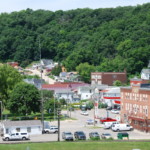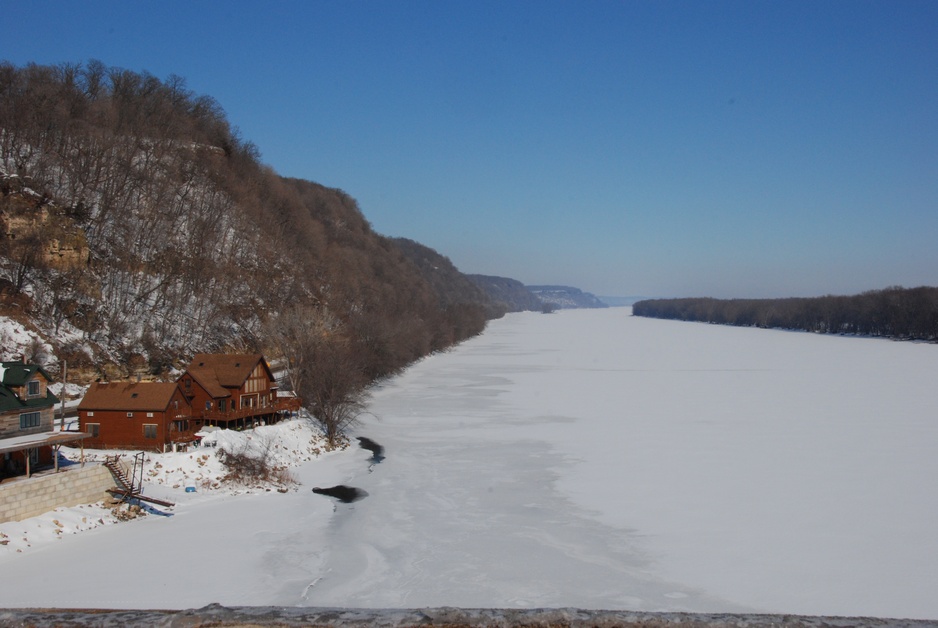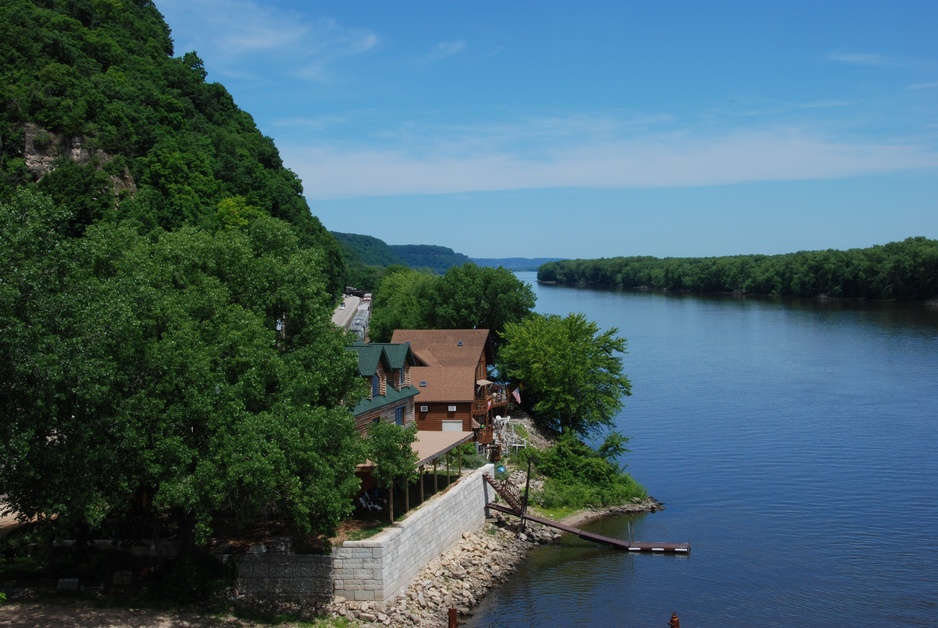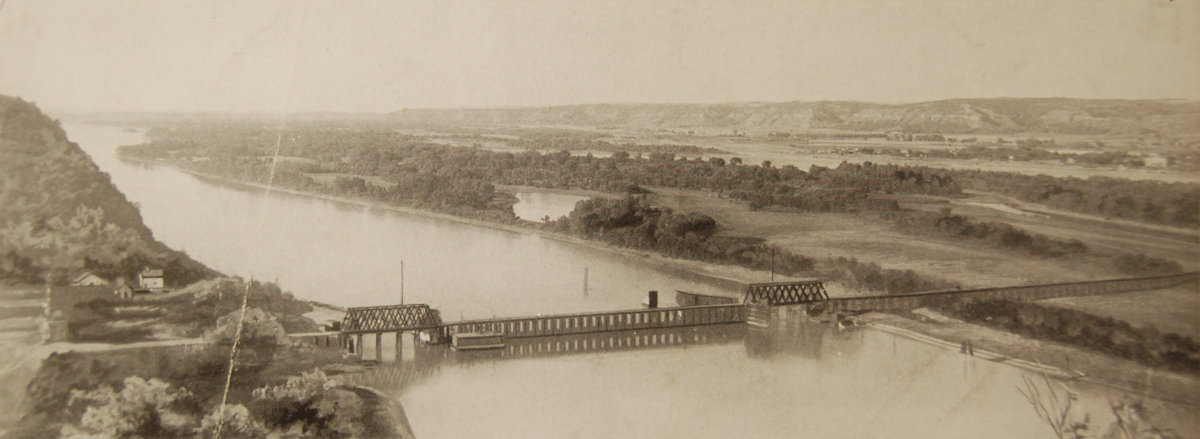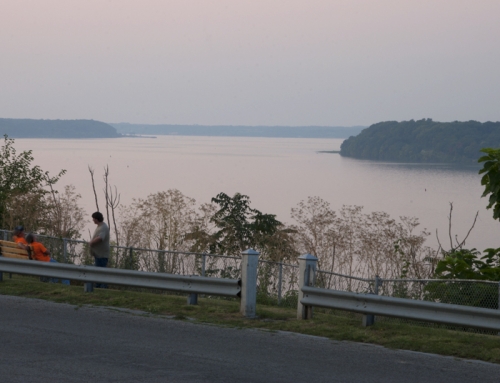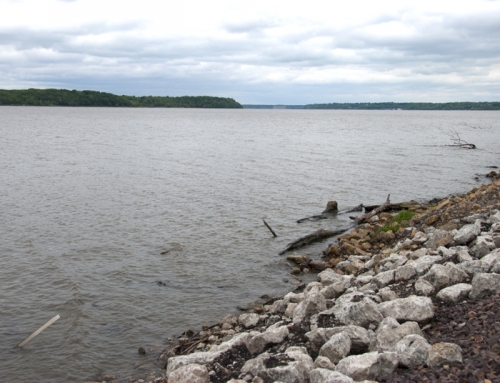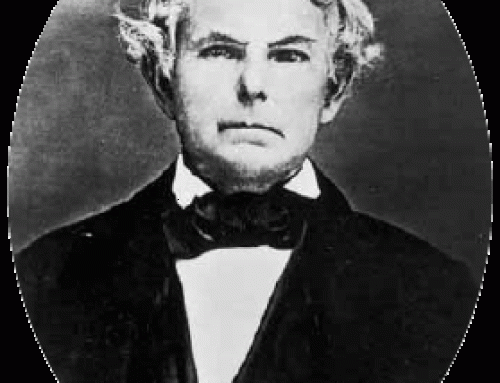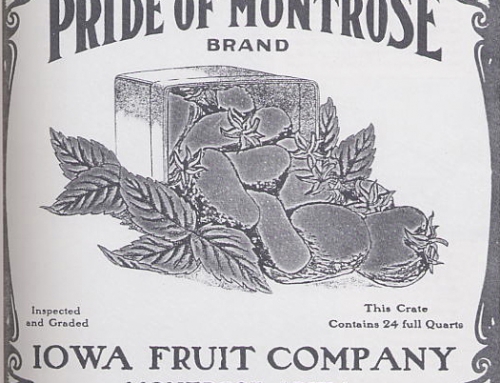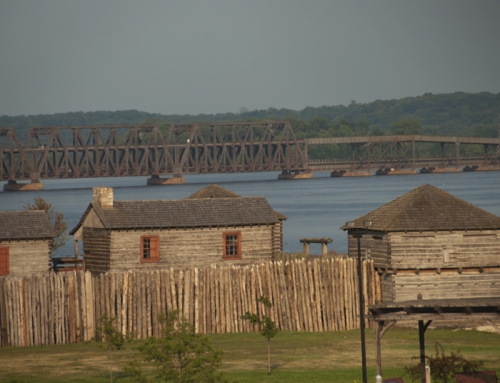Introduction
Tucked into a small valley at the end of Bloody Run Creek, Marquette was once a major railroad hub; it is still a hotbed for railroad enthusiasts, especially during the town’s annual festival celebrating the railroad.
Visitor Information
The Marquette Depot Museum (216 Edgar St.; 563.873.1200) serves double duty as visitors’ information center and local history museum.
History
Around 1785, when the area was under Spanish rule, Basil Giard moved from Wisconsin and made a land claim; he built three cabins and began farming a small plot. The American government refused to recognize his land claims, so in 1808 he moved back to Prairie du Chien. After his death, his claims were ultimately upheld and awarded to his heirs, who sold off the land; some of the land became the town of McGregor, and some became North McGregor.
Bloody Run Creek empties into the Mississippi at Marquette; it was initially known as Giard’s Creek. (I think you can figure out why.) The current name apparently goes back to Lt. Martin Scott from Fort Crawford, an avid hunter in the area, who, on his frequent trips across the river, would reportedly remark: “I am going to make the blood run today over on my hunting ground.” His soldier buddies heard this so often that they started to refer to the creek as Bloody Run. I have no idea if that’s true, but it’s not a bad story.
When the railroad reached Prairie du Chien in 1857, Iowa got a serious case of railroad envy. Speculation that a rail line would be built up the Bloody Run valley led to the development of a supply point in 1857 at the mouth of Bloody Run Creek and a small settlement grew up around it that was called North McGregor. Just a year later, North McGregor had 300 residents and a booming business community.
After a few failed attempts, construction of the proposed line from North McGregor to Monona, Iowa was finally completed in 1864. North McGregor was eventually tied into the first all-rail route between Chicago and the Twin Cities (completed in 1867); the only missing rail link was over the Mississippi River at North McGregor.
All of this excitement doubled the town’s population in ten years. The presence of the railroad spurred other business growth, such as a foundry and Flemming Lumber—one of town’s largest employers ever. In 1870, construction began on another railroad line, one that paralleled the Mississippi River from Dubuque. In late 1871, the tracks reached North McGregor, making it a two-railroad town. With all the trappings of a modern town in hand, residents of North McGregor voted to incorporate on April 25, 1874. In that same year, a reliable rail connection between Prairie du Chien and North McGregor was completed as the innovative pontoon bridge opened.
Marquette has suffered through high water from the Mississippi River many times, but flash floods have done the most damage. On May 24 1896, five inches of rain in one hour drenched North McGregor and sent a wall of water 20 feet high racing down Bloody Run valley, washing out bridges and railroad tracks, tossing box cars around like rubber duckies, and killing more than 20 people. A similar event triggered a flash flood on June 1, 1916, causing severe damage to the rail yards and roundhouse, but without the fatalities. After the 1916 flood, the railroad built new yards west of town on a higher grade, complete with a new roundhouse, and re-routed Bloody Run Creek. In 1920 residents of North McGregor voted to change their town’s name to Marquette in honor of the 17th century explorer. Marquette still has the railroad lines, but it is no longer a rail terminal.
Getting on the River
Maiden Voyage Tours offers leisurely cruises on the Mississippi River from the marina in Marquette (563.880.8970). On Friday and Saturday evenings, they offer irresistible river tours accompanied by a local band playing original songs. You won’t find a better sample of river life!
Exploring the Area
The Marquette Depot Museum (216 Edgar St.; 563.873.1200) packs a lot of information into a small space. Most of the displays highlight the city’s railroad history. Take time to flip through the clippings and photos housed in the display cases, which document the many floods that the town’s residents have survived, as well as the pontoon bridge.
Visit Eagle’s Landing Winery (127 North St.; 563.873.2509) to sample locally-produced wine.
Marquette has a scenic overlook with a decent view of the river; enter from North Street.
At Bloody Run Park (563.245.1516), trout fishing, picnicking and camping (see below) are the main activities.
Learn about the unique ecosystems of the Upper Mississippi River at the Driftless Area Wetlands Centre (509 US Highway 18; 563.873.3537); walk around the prairies and check out the interactive exhibits inside.
Entertainment and Events
The Casino Queen (US Business 18; 563.873.3531) has a 19,000-square-foot floating casino with 800 slot machines and 13 gaming tables. The pink elephant in front of the casino is a local legend. Originally built for a Republican political convention in Sparta, Wisconsin (and painted gray), the elephant was purchased by the owners of the new Pink Elephant Supper Club after Iowa passed liquor by the drink in 1964. In 1978, local Democrats took the elephant waterskiing (actually, it just sat on a pontoon boat) on the Mississippi in advance of a visit by President Jimmy Carter.
Farmers Market
Marquette hosts a farmer’s market on Fridays evenings at the Driftless Area Wetlands Centre (509 US Highway 18; 563.873.3537).
Festivals
Railroad Days (563.873.1200) honors Marquette’s railroad past and draws big crowds of rail enthusiasts in September.
**Marquette is covered in Road Tripping Along the Great River Road, Vol. 1. Click the link above for more. Disclosure: This website may be compensated for linking to other sites or for sales of products we link to.
Where to Eat and Drink
The Casino Queen’s Market Street Buffet (US Business 18; 563.873.3531) serves their food buffet style—no false advertising here—but does it well. Sunday brunch is a good deal, with a nice range of breakfast and lunch items.
Where to Sleep
Camping
Bloody Run Park (563.245.1516) has 19 primitive sites tucked into a quiet valley.
The Natural Gait Resort also has a few campsites; see below.
Moderate and Up
The Frontier Motel (101 S. First; 563.873.3497) offers 20 simple, clean rooms along the riverfront and next to the casino.
Country Escape
A few miles outside of Marquette—out of cell phone range—the Natural Gait Resort (1878 Old Mission Dr.; 877.776.2208) is a soothing place for a getaway, especially if you bring your horse to explore the 20 miles of trails that connect to Yellow River State Forest. Six fully equipped cabins (minus televisions) are cozy and have great views of the area; they can sleep from 4 to 14 people. They also have six lodge rooms that can sleep up to three in bunk beds. If that’s not enough, they also have several campsites in two separate camping areas geared toward horse owners but open to anyone; several sites have good views looking down to the Yellow River.
Resources
Post Office: 112 North St.; 563.873.2338.
Where to Go Next
Heading upriver? Check out Effigy Mounds National Monument.
Heading downriver? Check out McGregor.
Community-supported writing
If you like the content at the Mississippi Valley Traveler, please consider showing your support by making a one-time contribution or by subscribing through Patreon. Book sales don’t fully cover my costs, and I don’t have deep corporate pockets bankrolling my work. I’m a freelance writer bringing you stories about life along the Mississippi River. I need your help to keep this going. Every dollar you contribute makes it possible for me to continue sharing stories about America’s Greatest River!
Marquette Photographs
©Dean Klinkenberg, 2024, 2021, 2018,2013,2011
